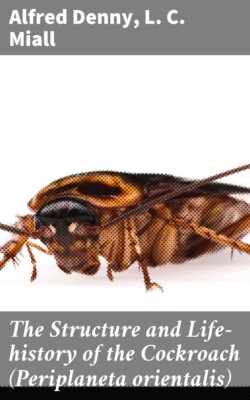Читать книгу The Structure and Life-history of the Cockroach (Periplaneta orientalis) - L. C. Miall - Страница 8
Straus-Dürckheim on the Cockchafer.
ОглавлениеIn beauty and exact fidelity Straus-Dürckheim’s memoir on the Cockchafer (Considérations Générales sur l’Anatomie Comparée des Animaux Articulés, auxquelles on a joint l’Anatomie Descriptive du Melolontha vulgaris, 1828) rivals the work of Lyonnet. Insect Anatomy was no longer a novel subject in 1828, but Straus-Dürckheim was able to treat it in a new way. Writing under the immediate influence of Cuvier, he sought to apply that comparative method, which had proved so fertile in the hands of the master, to the Articulate sub-kingdom. This conception was realised as fully as the state of zoology at that time allowed, and the Considérations Générales count as an important step towards a complete comparative anatomy of Arthropoda. Straus-Dürckheim had at command a great mass of anatomical facts, much of which had been accumulated by his own observations. He systematically compares Insects with other Articulata, Coleoptera with other Insects, and the Cockchafer with other Coleoptera. Perhaps no one before him had been perfectly clear as to the morphological equivalence of the appendages in all parts of the body of Arthropods, and here he was able to extend the teaching of Savigny. His limitations are those of his time. If in certain sections we find his collection of facts to be meagre, and his generalisations nugatory, we must allow for the progress of the last sixty years—a progress in which Straus-Dürckheim has his share. It is the work of science continually to remake its syntheses, and no work becomes antiquated sooner than morphological generalisation.
It is therefore no reproach to Straus-Dürckheim that his treatise should now be chiefly valuable, not as “Considérations Générales,” but as the anatomy of the Cockchafer. Long after his theories and explanations have ceased to be instructive, when the morphology and physiology of 1828 have become as obsolete as the Ptolemaic astronomy, the naturalist will study these exquisite delineations of Insect-structure with something of the pleasure to be found in examining for the hundredth time a delicate organism familiar to many generations of microscopic observers.
The fidelity and love of anatomical detail which characterise the description of the Cockchafer are not less conspicuous in Straus-Dürckheim’s Anatomie Descriptive du Chat (1846). Both treatises have become classical.
We have seen how, in Straus-Dürckheim’s hands, Insect anatomy became comparative. New studies—histology, embryonic development, and palæontology—have since arisen to complicate the task of the descriptive anatomist, and it appears to be no longer possible for one man to complete the history of any animal of elaborate structure and ancient pedigree. As a method of research the monograph has had its day. The path of biological discovery now follows an organ or a function across all zoological boundaries, and it is in the humbler office of biological teaching that the monograph finds its proper use.
